Greek History pictures
1/10
There's no tags or description
Looks like no tags are added yet.
Name | Mastery | Learn | Test | Matching | Spaced |
|---|
No study sessions yet.
11 Terms
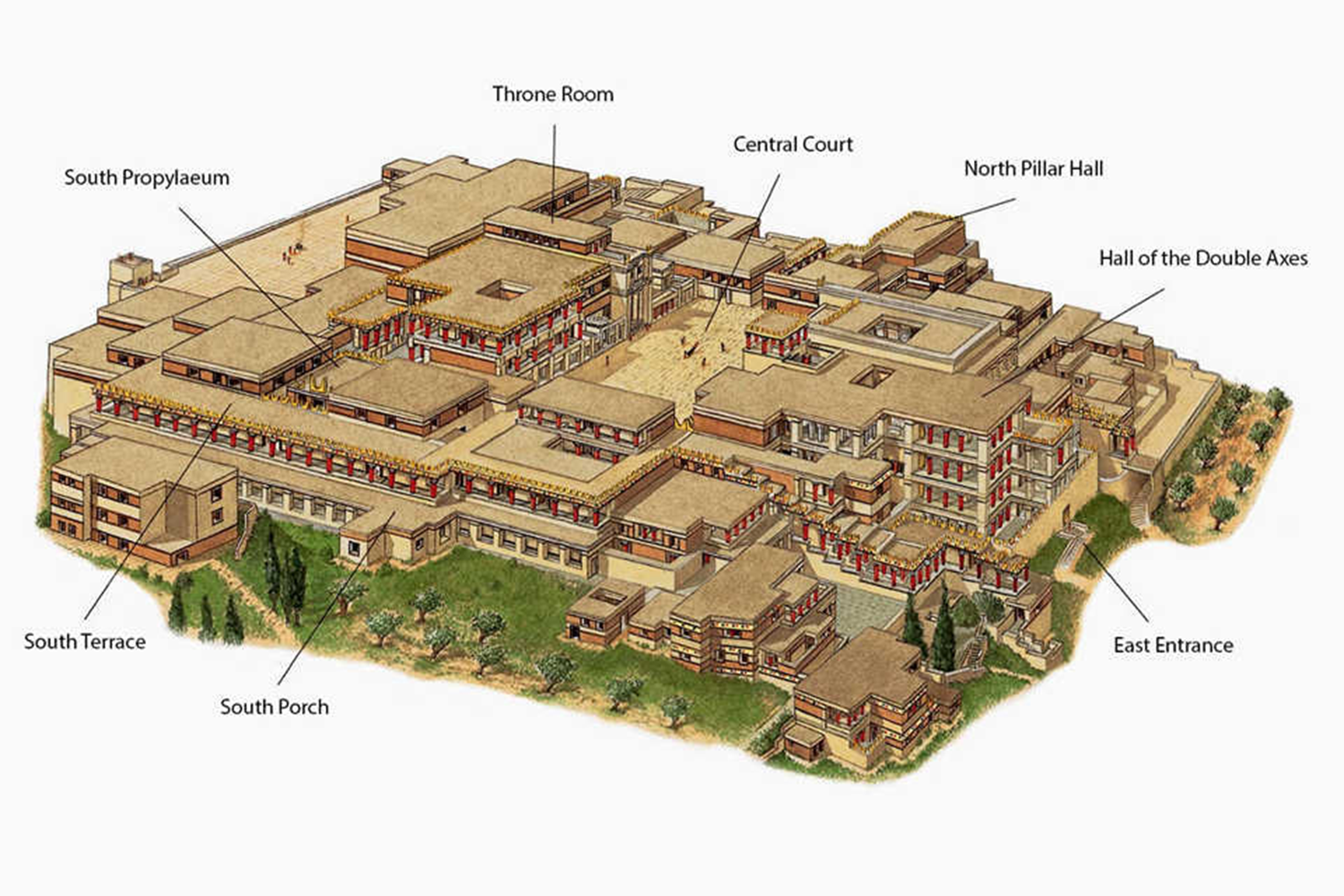
Knossos
description: “palace” at Knossos discovered by Arthur Evans with similar features as other structure on Crete. Some important features include the rectangular bull court facing a nearby mountain, magazines for storing goods, narrow and few entrances, and simple columns with rounded capitals on top.
analysis: The bull court may suggest some sort of religious or at least ceremonial significance for the location, especially considering it was facing a nearby mountain and with depictions of bulls on artwork, like frescoes. The numerous magazines support the theory of a redistribution economy.
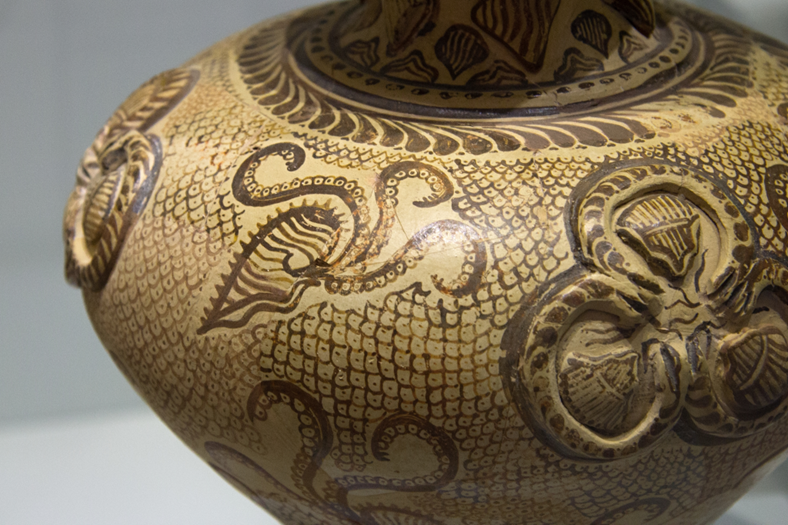
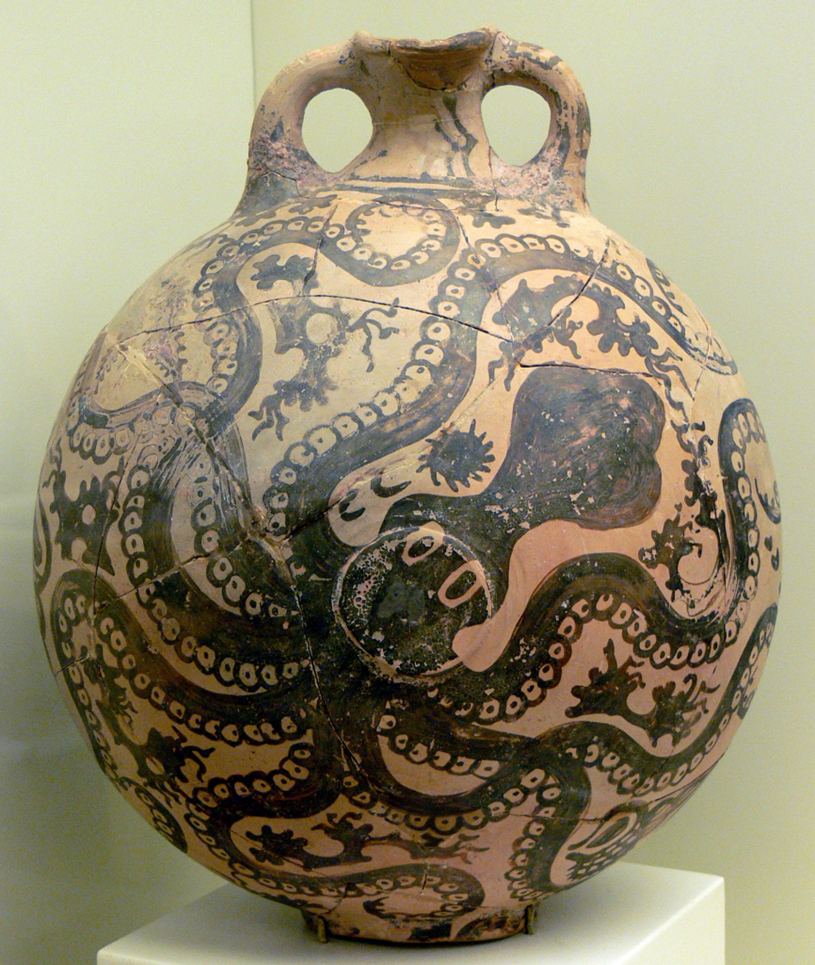
marine style
description: marine style neolithic age Minoan art that which was the last strictly Minoan style before the Mycenean invasion.
Analysis: This style is more intricate and complicated than previous Minoan styles. Illustrates the practice of horror vacui, common in Greek Art. It is difficult to decide concretely why this style was popularized but it is reasonable to assume that a seafaring life, including trading, had some influence.
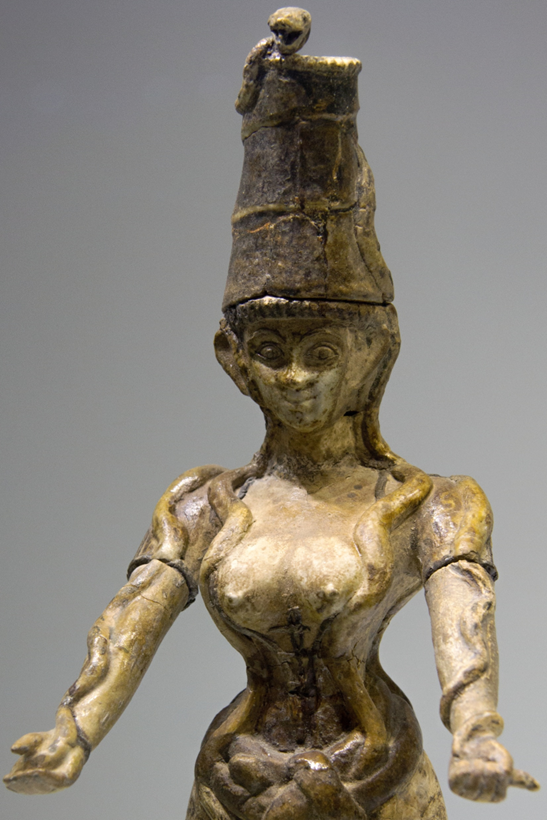
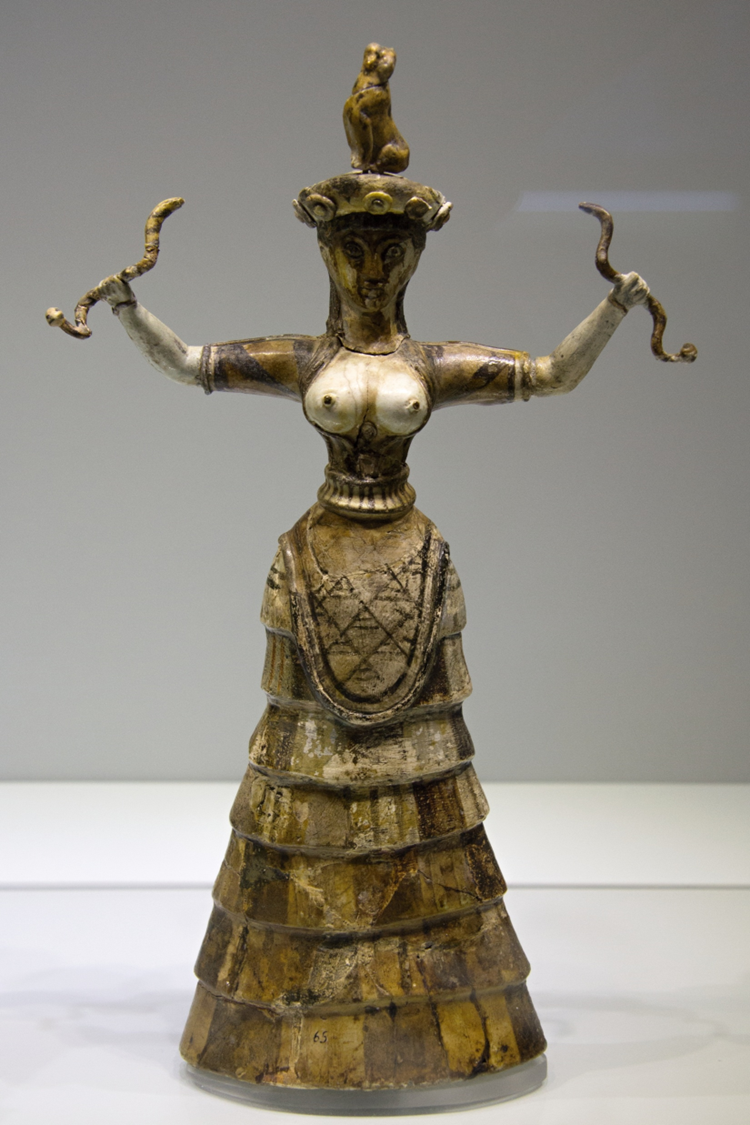
Snake Goddess
description: multiple iterations of this sort of “snake goddess” statuette exist, each depicting a typical Minoan woman with a bare chest and tight waisted dress.
analysis: The snakes placed in her hands and arms are not original and it is uncertain that they are snakes. The cat placed on the hat also isn’t original. These edits reveal to us the difficulties of interpreting the past and in trying to deduce any significance.

Mask of Agememnon
Description: This gold mask was found in grave circle A by Schliemann in one of the deep grave shafts.
Analysis: Although this mask was attributed to Agamemnon of Homer’s Iliad, this was influenced by Schliemann’s desire to find proof of Homer’s accounts. This item among numerous others made of gold that were buried suggest some sort of concern for the dead, the deeper graves had greater wealth within.
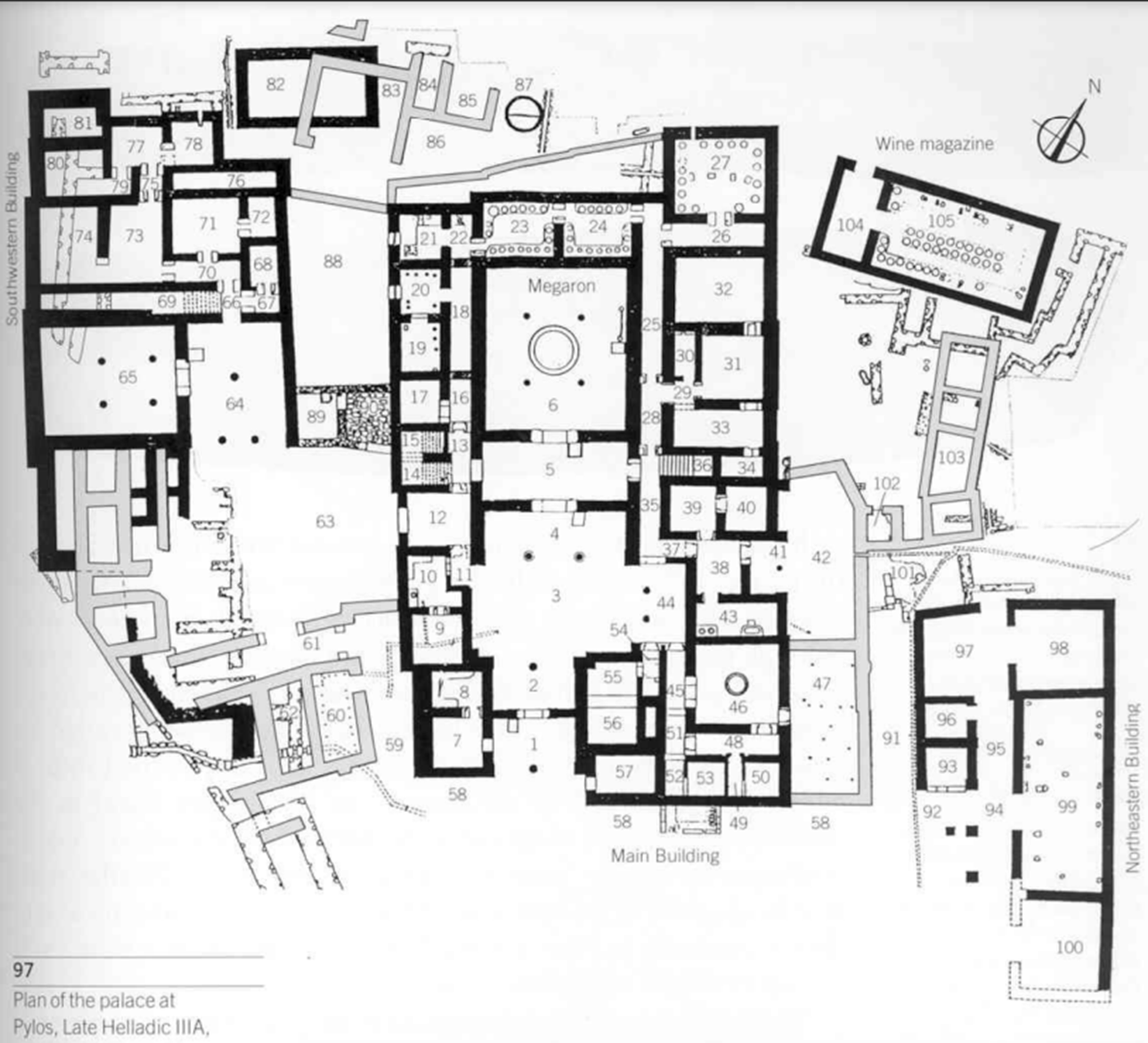
Pylos
Description: Just as other Mycenean sites, this one contained a Megaron. Megarons are consistent in design and this one features a large entrance that leads straight to it, suggesting it was a common gathering place.
Analysis: Art depicted military victories against noticeably less civilized people and hunting of boars. As their armor was made from boar tusks, significant amount of time must’ve been spent on the activity. The linear B tablets found at this site mentioned other locations which appear to have been obedient to Pylos’ authority, suggesting some sort of redistributive economy based, or at least some central node of an economic network. This is also supported by the magazines found on site.
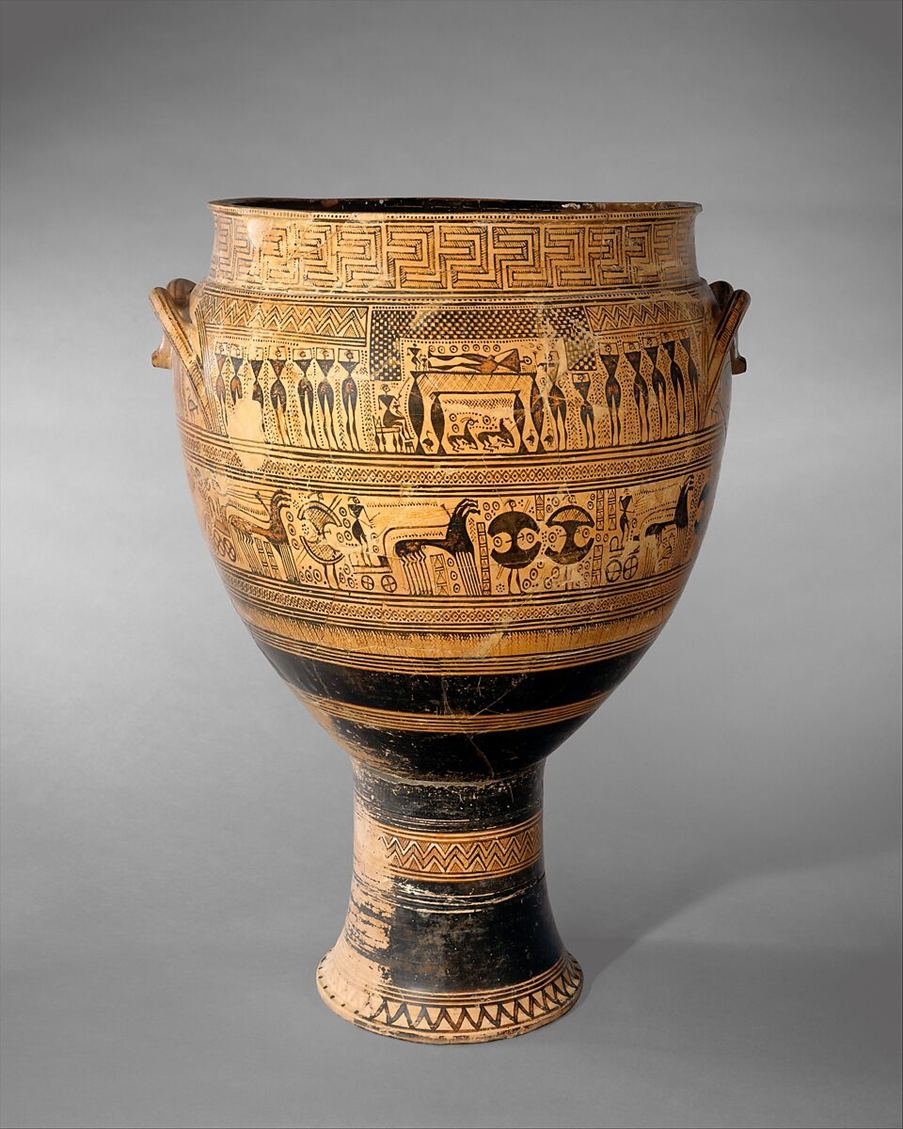
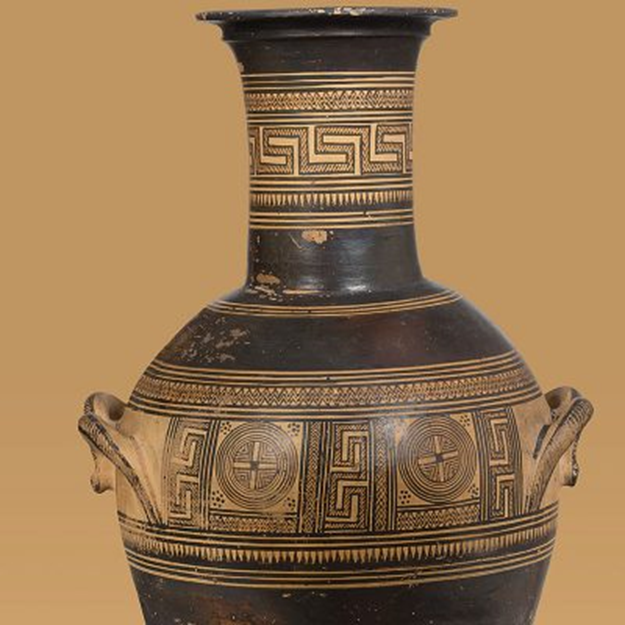
Iron Age Pottery
description: This is iron age pottery of the Greek’s known as geometric style.
analysis: This style is very detail with little blank space, a practice known as horror vacui. Geometric shapes were more than symply abstract, being used to represent people, plants, and animals. The above image depicts a burial with a shroud being held above the deceased person, suggesting a high social class. The depiction of chariots is interesting alongside foot soldiers as it was common practice to ride into battle and then dismount for the actual fighting. This style was also influenced by the olympics, showing how influential the event was.


Monsters in Greek art
definition: The bottom piece depicts Odysseus blinding the cyclops and the top one the gorgon and Perseus
Analysis: the popularization of depicting monsters in Greek art coincides with increasing colonization and could represent views of foreigners or new animals and descriptions passed from mouth to mouth.
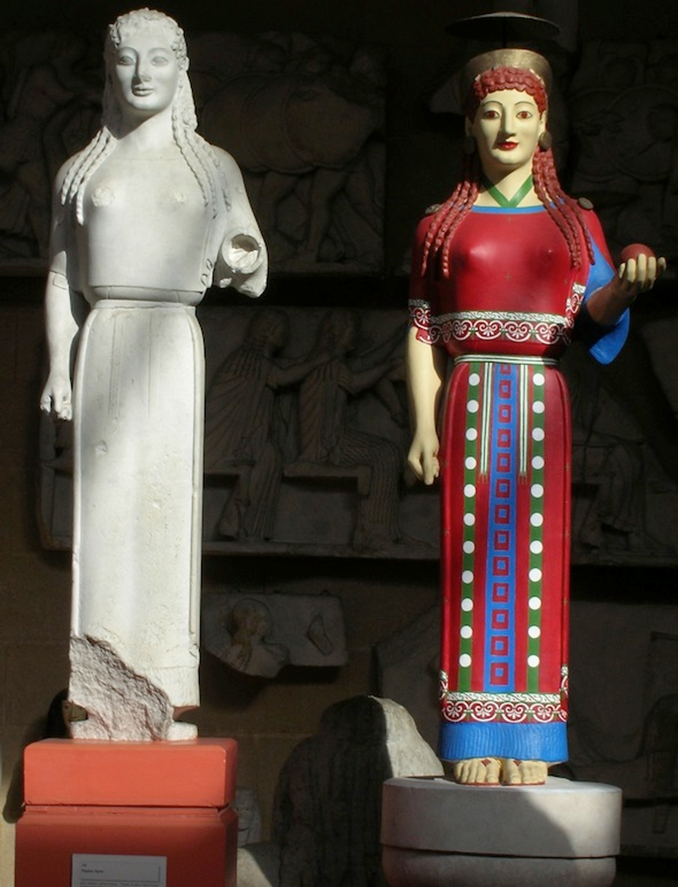
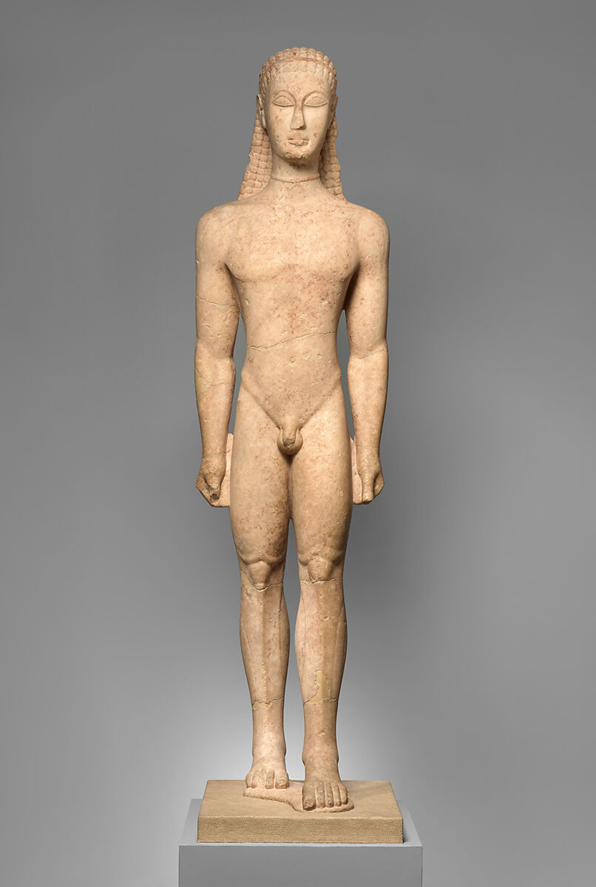
kouros (men) and Kore (women)
Definition: These are very common archaic age statuettes of non-personal form and basic in appearance. The men are depicted naked and the women clothed in dresses.
Analysis: These, like much other Greek art, would’ve been painted and colorful. The clothing choices help us to understand what would have been normal during the Archaic age, given the commonplace of this art and its uniformity.
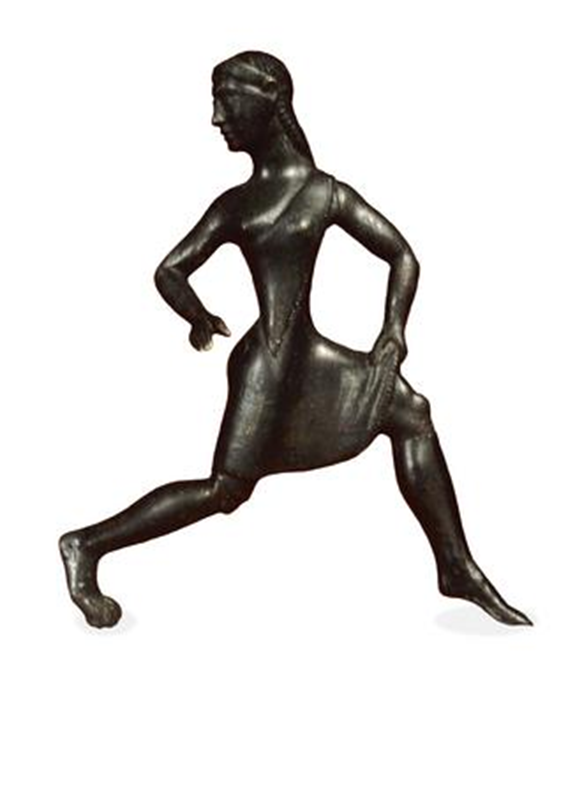
thigh flasher statuette
Definition: Archaic age spartan statuette of a woman.
Analysis: Based on the description of Spartan women by ancient authors, women were more independent and stronger. They were called thigh flashers because of their clothing which is exemplified in this art piece. It is interesting that this was viewed negatively by the Greeks but their descriptions help us to understand Spartan culture and to translate the meaning of art like this.
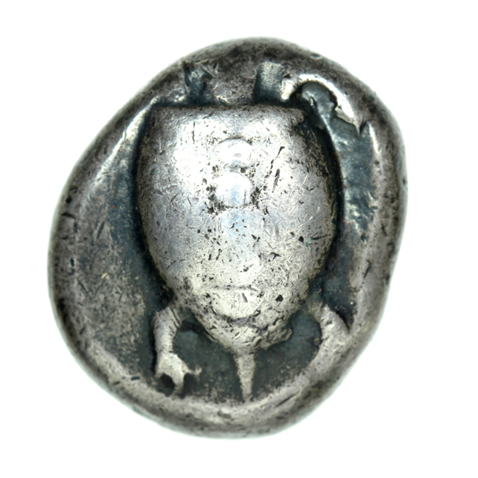
Athenian coinage
Description: This archaic age coinage of Athens during the early kingship periods resembles a turtle.
Analysis: The existence of coinage at this time shows a development in the definition of wealth as something more than just property and belonging, it would also facilitate trade. The symbol of a turtle is perhaps that of a leading family/clan. As factionalism became an issue in Athens, it is good to note that the power of a family could influence the creation of currency.
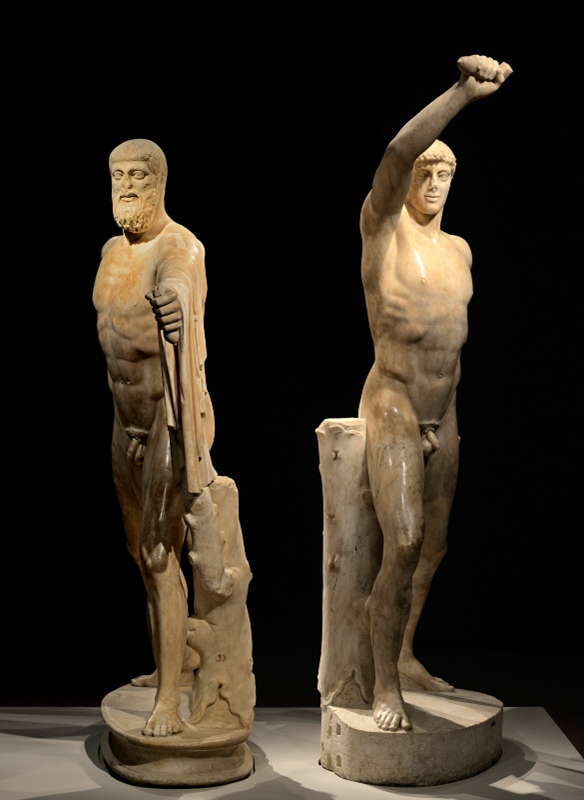
Harmodius and Aristogeiton
Description: statuettes of a eromenos (Harmodius) and erastes (Aristogeiton), an example of pederasty.
Analysis: Despite being individuals of any real significance outside of one event, they are depicted very nobly. You can tell that they are in a pederastic relationship due to their facial hair. Despite their fame being for killing Hipparchus, and early case of tyrannicide, they are celebrated as seen in Aristotle’s writing on the subject in Athenian Politeia.